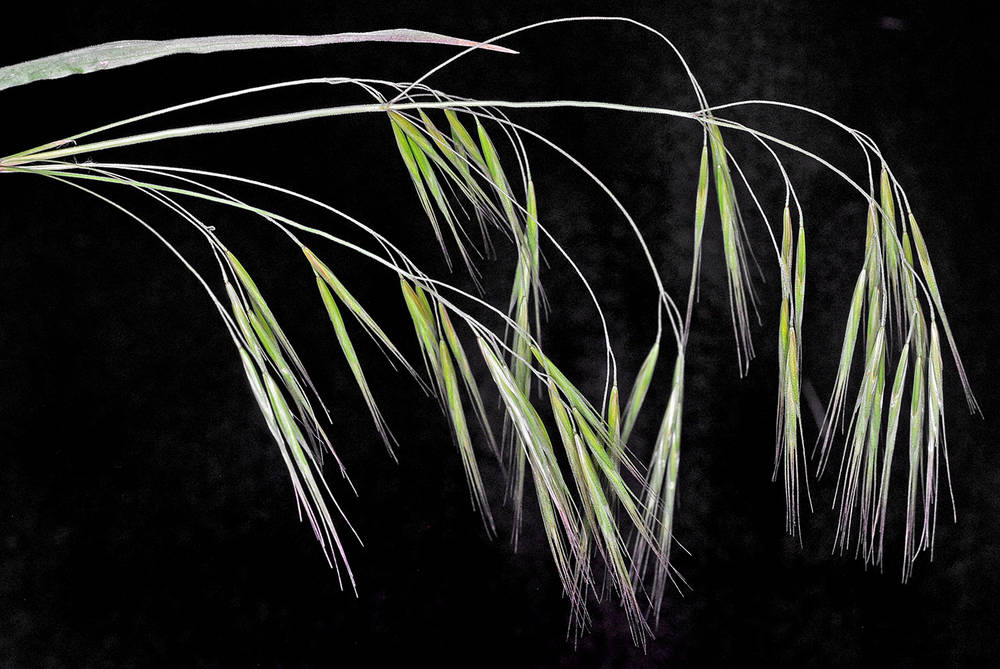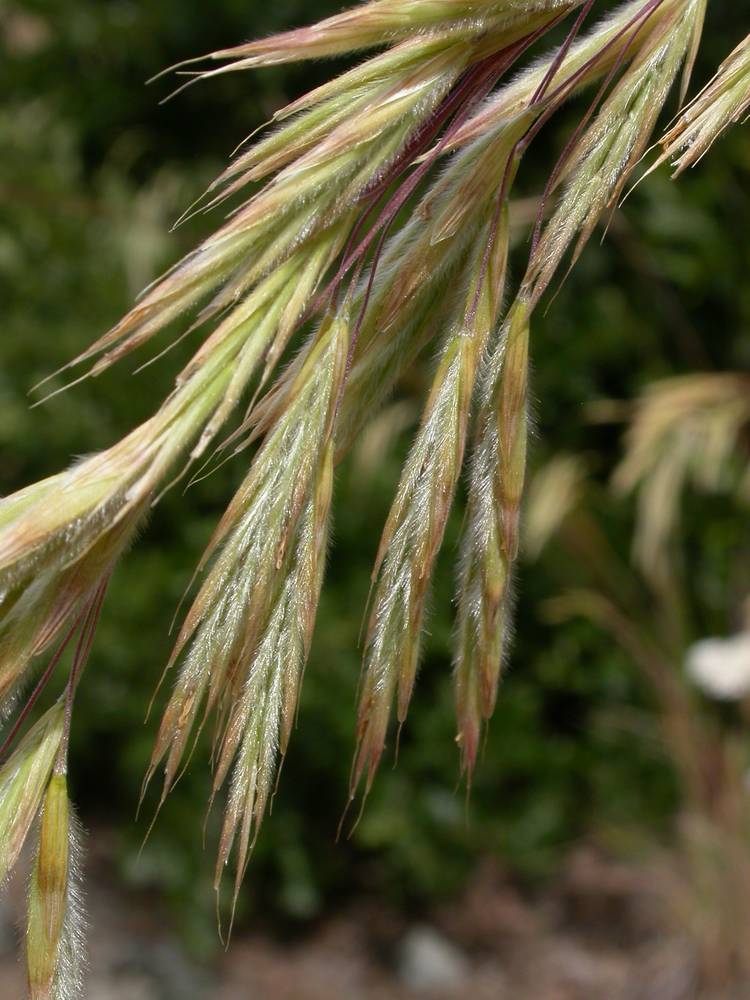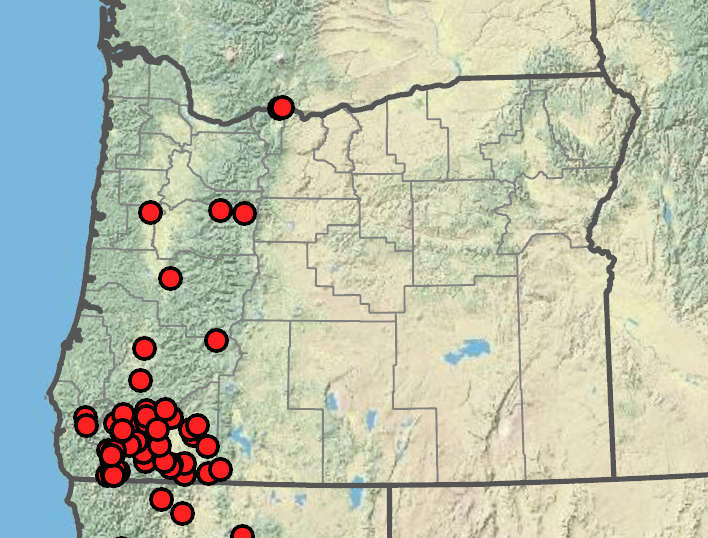Bromus tectorum
Bromus laevipes
cheatgrass, downy brome, downy chess
Chinook brome
puberulent.
often rooting at the lower nodes;
internodes usually glabrous, often puberulent-pubescent below the nodes, rarely puberulent throughout;
nodes 3–5(6), pubescent.
sheaths densely and softly retrorsely pubescent to pilose; upper sheaths sometimes glabrous;
blades 1–16 cm × 1–6 mm, softly hairy on both surfaces.
sheaths glabrous, sometimes slightly pubescent near the throat;
ligules 2–4.2 mm, glabrous, obtuse, lacerate;
blades 13–26 cm × 4–10 mm, light green or glaucous; flat, glabrous, sometimes scabrous on both surfaces.
5–20 × 3–8 cm; open, nodding;
branches 1–4 cm, drooping, 1-sided and longer than the spikelets, usually at least 1 branch with 4–8 spikelets.
10–30 × 2–5 cm; open, nodding;
branches ascending to spreading, sometimes drooping.
10–20 mm, moderately laterally compressed, not densely crowded, 4–8 florets.
23–35 cm, elliptic to lanceolate; terete to moderately laterally compressed, with 5–11 florets.
villous, pubescent, or glabrous;
lower glumes 4–9 mm, 1-veined;
upper glumes 7–13 mm, 3–5-veined.
glabrous, sometimes scabrous;
margins often bronze-tinged;
lower glumes 6–9 mm, 3-veined;
upper glumes 8–12 mm, 5-veined.
9–12 mm, lanceolate, glabrous or pubescent to pilose, 5–7-veined;
tips acuminate; hyaline; bifid, with teeth 0.8–2(3)mm, awned;
lemma awns 10–18 mm; straight.
12–16 mm, elliptic to lanceolate, rounded over the back; backs sparsely pilose, pubescent, or scabrous;
margins densely pilose at least on the lower half, often bronze-tinged;
tips acute to obtuse; entire, rarely slightly emarginate with lobes less than 1 mm;
lemma awns 4–6 mm; straight.
0.5–1 mm.
3.5–5.5 mm.
=14.
=14.
Bromus tectorum
Bromus laevipes
Disturbed areas, sagebrush steppe, degraded grasslands, roadsides. 0–2400 m. BR, BW, Casc, Col, CR, ECas, Lava, Owy, Sisk, WV. CA, ID, NV, WA; throughout North America; worldwide. Exotic.
Bromus tectorum is a relatively short grass with drooping inflorescences. Similar B. sterilis and B. diandrus have longer glumes, lemmas, and awns, and spikelets that hang down at a shallower angle than those of B. tectorum. The introduction of B. tectorum to shrub steppe habitats during a time of massive overgrazing in the late 1800s has made restoration of native plant communities difficult or impossible, even where grazing no longer occurs. Fast-growing B. tectorum seedlings outcompete slower growing native grass seedlings for water in drying soils. At maturity, the awns make B. tectorum unpalatable to livestock.
Open slopes and woodlands. 100–1400m. ECas, Sisk. CA. Native.
Bromus laevipes has a more or less open inflorescence with ascending to spreading branches. The lemma margins have dense, long, spreading hairs, contrasting with the scabrous to sparsely hairy lemma backs. The upper glumes have 5 veins, which is unusual among the perennial bromes that have rounded lemma backs.
Barbara Wilson, Richard Brainerd, Nick Otting
Barbara Wilson, Richard Brainerd, Nick Otting
- Local floras:
BC,
CA,
OR,
WA
- Local Web sites:
CalFlora,
CalPhotos,
Flora NW,
PNW Herbaria
WildflowerSearch
iNaturalist (observations)
USDA Plants Database
- LBJ Wildflower Center
- SEINet
- Plants of the World Online
- Encyclopedia of Life
- Wikipedia
- Google Image Search





